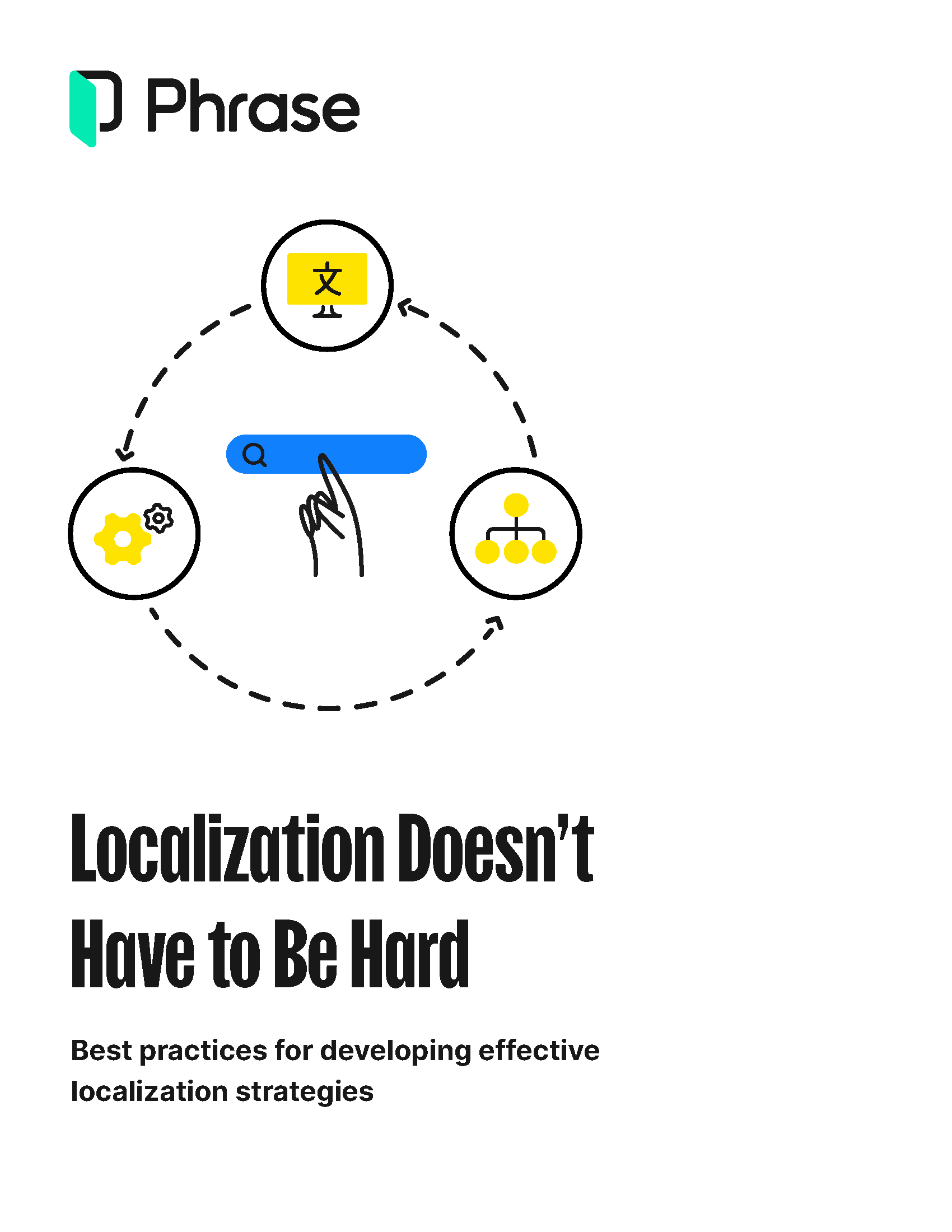Localization strategy
A Day in the Life of a Localization Manager

Localization is a key part of a strong global expansion strategy. Any company looking to reach and establish a customer base worldwide will either have an in-house localization manager or outsource that position.
What exactly does a localization project manager do, and why is their job crucial for global success? What keeps them motivated every day, and what are their greatest challenges in scaling the localization effort of a business?
Jimdo’s Eike-Marie Eiting and HubSpot’s Gaya D. Saghatelyan give us fascinating insights into their daily work as localization managers and how they see their own roles in expanding the global footprint of their companies.

Free download
The Complete checklist for launching your multilingual website
There’s a lot that goes into a successful multilingual website launch, so make sure you’re on the right track with this proven and easy-to-follow 6-step checklist.
What is a localization manager?
As a localization manager, localization specialist, or translation project manager, you manage suppliers, budgets, expectations, and a variety of workflows that all come together to develop, launch, and market products with content that is ready for international markets.
The tricky part of the job is to bridge the gap between content that is merely translated and content that is localized to look and feel native to the recipients in a specific target market. Localized content engages and triggers sales and customer retention. To make all of this happen, the localization project manager is, by nature, a highly cross-functional person.
What does a localization manager do?
Following the framework and timelines established by the product manager and the marketing or sales department, the localization project manager will create a workflow. This can include:
- Determining deliverables and delivery dates,
- Recruiting and contracting with the respective translators,
- Consulting with a localization specialist regarding internationalization and local specifics,
- Preparing glossaries and briefs for the translators,
- Conferring with product managers about potential cultural taboos and no-gos,
- Overcoming those issues by creating specific guidelines for specific product regions.
The localization manager is also a people manager, re-adjusting and re-aligning overall flows, escalating and preventing crisis situations, such as major delays or legal issues, all while keeping their cool under pressure. She or he is in the pole position for resolving conflicts and dealing with frustration from all sides.
Being connected to many teams, people, and languages is exactly what Eike-Marie Eiting, Localization Manager at Jimdo, one of Germany’s leading web-hosting services, likes most about her job as a localization manager. It’s a highly rewarding experience, but one that isn’t without its hiccups:
“The biggest challenge is raising awareness of the needs of the localization team within the company. Often, we aren’t very good at writing briefings because we don’t have a clear picture of how much people outside our own bubble know (less than we think), so sometimes the job feels like chasing information and working on annoying monkey tasks. On good days, I’ll see how I can make an impact by improving flow, tooling, or simply communication and how this will help my localization team, our stakeholders, and even our customers. I mention our customers because they truly feel welcomed when we show them that we speak their language, knowing the bits and tweaks that are rooted deeply in local culture”, explains Eike-Marie.
How to ace it as a localization project manager
To successfully coordinate any localization project from start to finish, an accomplished localization project manager must not only stay ahead of trends but also ahead of the curve. They implement buffers where possible to allow for small delays in the production of the localized content without major consequences for their deadlines.
When hiring or contracting translators or LSPs, he or she ensures that they are up to the task, applying the latest software and technology solutions to oversee, track, review, and finalize the localized content.
Applying knowledge, skills, and often, wit, they will juggle the various tasks with ease, confidence, and a calm fashion. The goal is to help their team perform as professionals in a stress-free working environment while enjoying the process.

Free download
Best practices for developing effective localization strategies
Explore how to tackle localization management efficiently and engage customers across the globe in their native languages and local experiences.
Gaya D. Saghatelyan, Localization Manager at HubSpot, a leading cloud-based CRM, stresses team collaboration as one of the greatest advantages of her profession. From marketing to customer success, from UX research to product, she partners with diverse teams every day, learns about their world, and enables them to take their ideas and make them truly global:
“Knowing that our tool and our ideas are helping small and medium businesses around the world be successful at what they do is what motivates me every day. The hardest part of my job is on the other hand not having a 100% correct solution 100% of the time because we work in a constantly evolving environment and often don’t have a tested path for where we’re going—although this is a challenge, it’s also very rewarding to see how different solutions play out.”
Successful localization managers rely on modern localization technology
Implementing localization technology is a key requirement to excel in localization. Why? It helps the localization manager deliver guidelines, context, glossaries, and other documentation to the translators supports easy communication through chat channels, and offers features designed to quickly resolve questions or spontaneous issues. Wouldn’t you love to get rid of long email threads and a back-and-forth of clarification requests?
A modern translation management system, for example, is browser-based and offers real-time tracking and a strong progress overview, from any connected device. It enables workflow planning, including alerts early on about potential delays. This gives the localization manager the ability to anticipate potential issues and escalate necessary solutions as needed, helping to eliminate costly delays and errors (of the kind that drive management and sales crazy). Better throughput, better overview, happier stakeholders—that’s the ultimate goal of any successful technology implementation.
Whenever you decide to integrate an app, a tool, software, or other technological solution, it should save you time, streamline your tasks, ensure better communication, and help you to focus on personal interaction—no matter if that is with clients, superiors, suppliers, or the youngster that prepares those yummy Moccacinos for you. Any tool that does not do exactly that for the localization manager will have to go. Period.
What is a translation management system?
Learn what makes a translation management system and how it helps businesses seeking to expand globally translate content more quickly and efficiently.
Putting the cherry on top of the localization cake
Creating localized content that both sounds natural and conveys the brand message on every level while attracting customers globally is exactly what distinguishes an accomplished localization manager from their peers. To get there, the localization manager partners with other skilled professionals with complementary expertise. These are usually:
- Software engineers
- Language service providers (LSPs)
- Market analysts and local market experts
- Marketers and SEO specialists, etc.
The successful localization project manager will neither hesitate to learn something new nor will in any way obstruct the established workflow and timelines. After all, the localization manager has a keen eye, knows how to spot the right talent, and prevents issues further down the line.
This jack of all trades is linguistically versatile, fluent in all things technology, realistic, and thanks to their deep comprehension of the task at hand, knows how to motivate all players. Today, the localization manager is the hero of any localization effort—and will be again tomorrow.





